A sneak peek inside Northeastern’s renovated Snell Library, a ‘more experiential, more collaborative space’
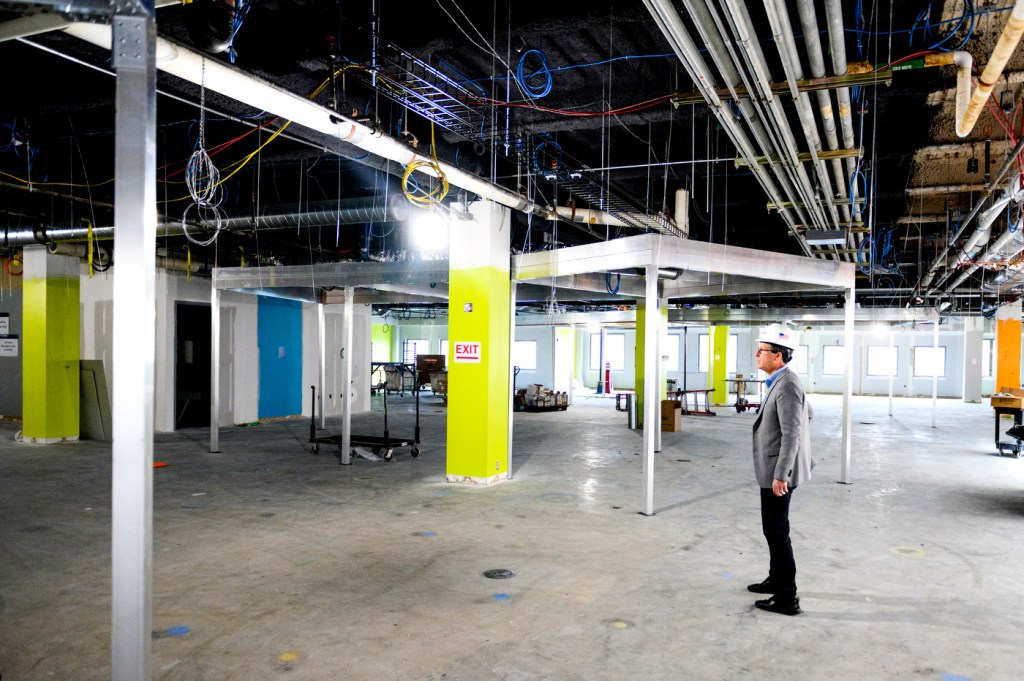
The windows along the south side of the building are now visible from the center of the room. The acoustic tile drop ceiling is gone. Aluminum framing is in place to anchor the glass-cube collaborative study spaces that will soon fill with students.
As he steps onto the fourth floor of Snell Library on Northeastern’s Boston campus, Dan Cohen enthusiastically points out features that will introduce light, open up and unify spaces, and create connections among students, faculty and staff and community members who use the library.
“I think it’s going to be a more experiential, more collaborative space,” says Cohen, vice provost for information collaboration, dean of the libraries, and professor of history at Northeastern. “It will reflect Northeastern’s unique way of generating knowledge and passing it on—it’s very exciting.”
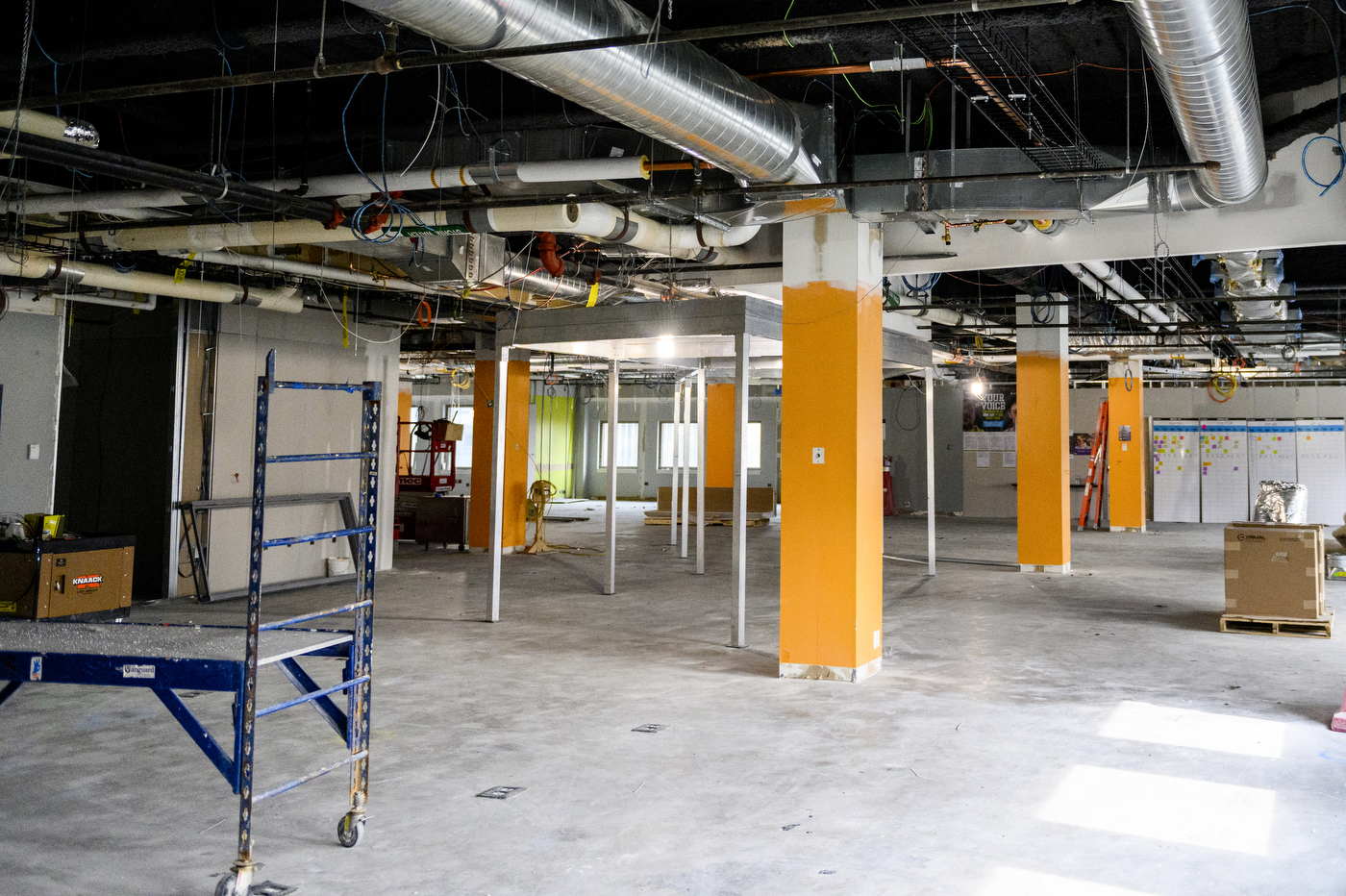
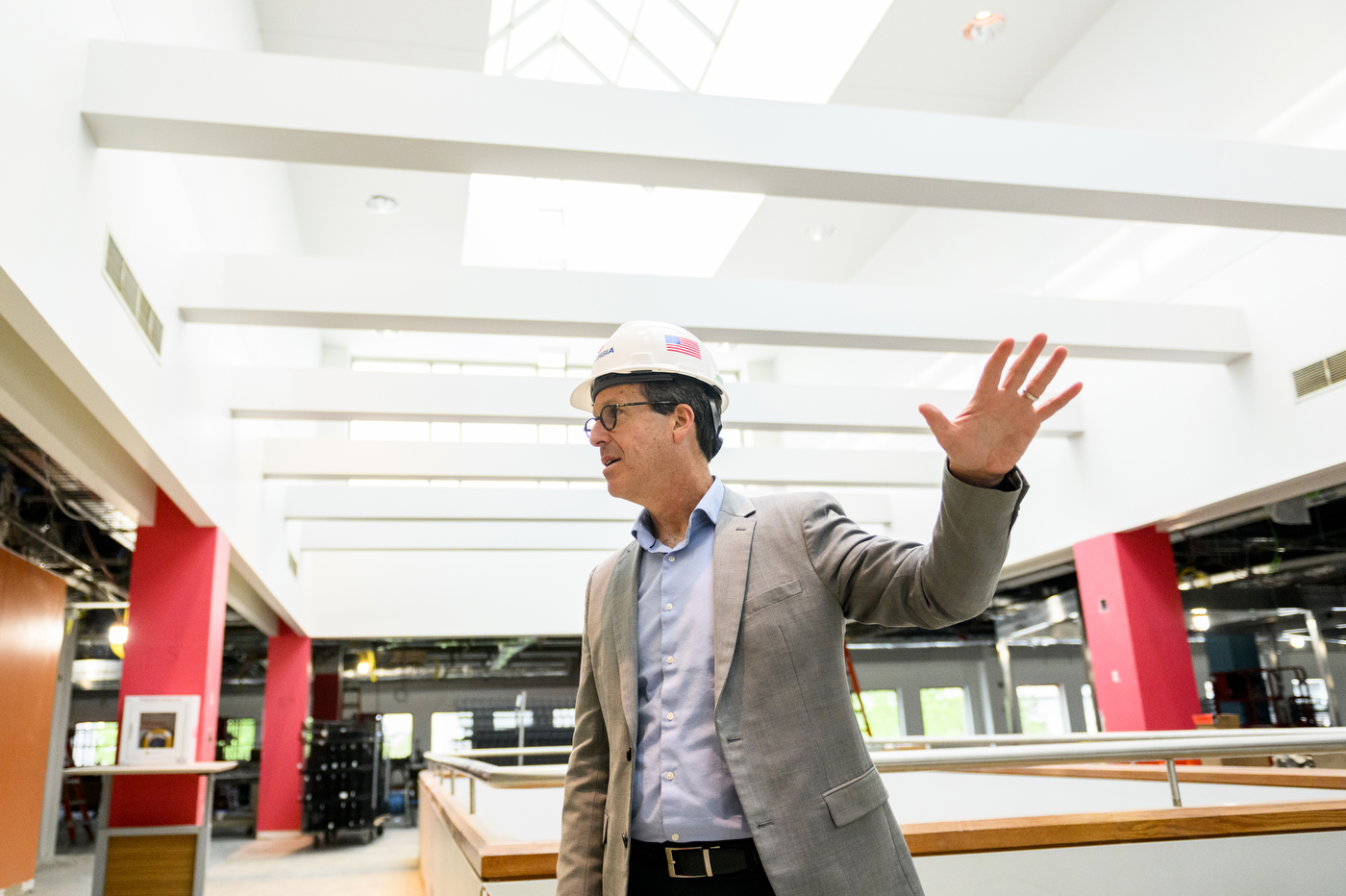
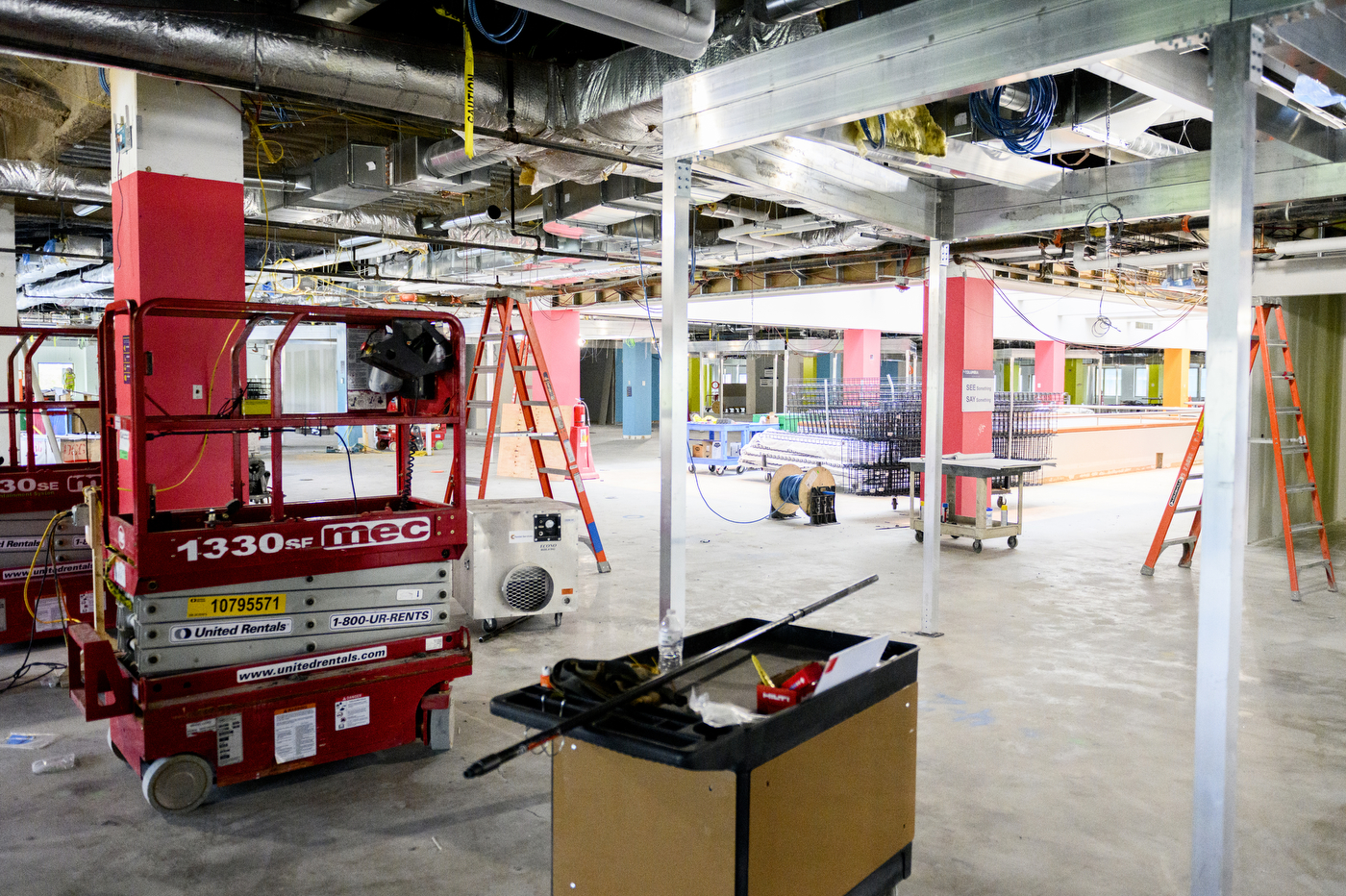
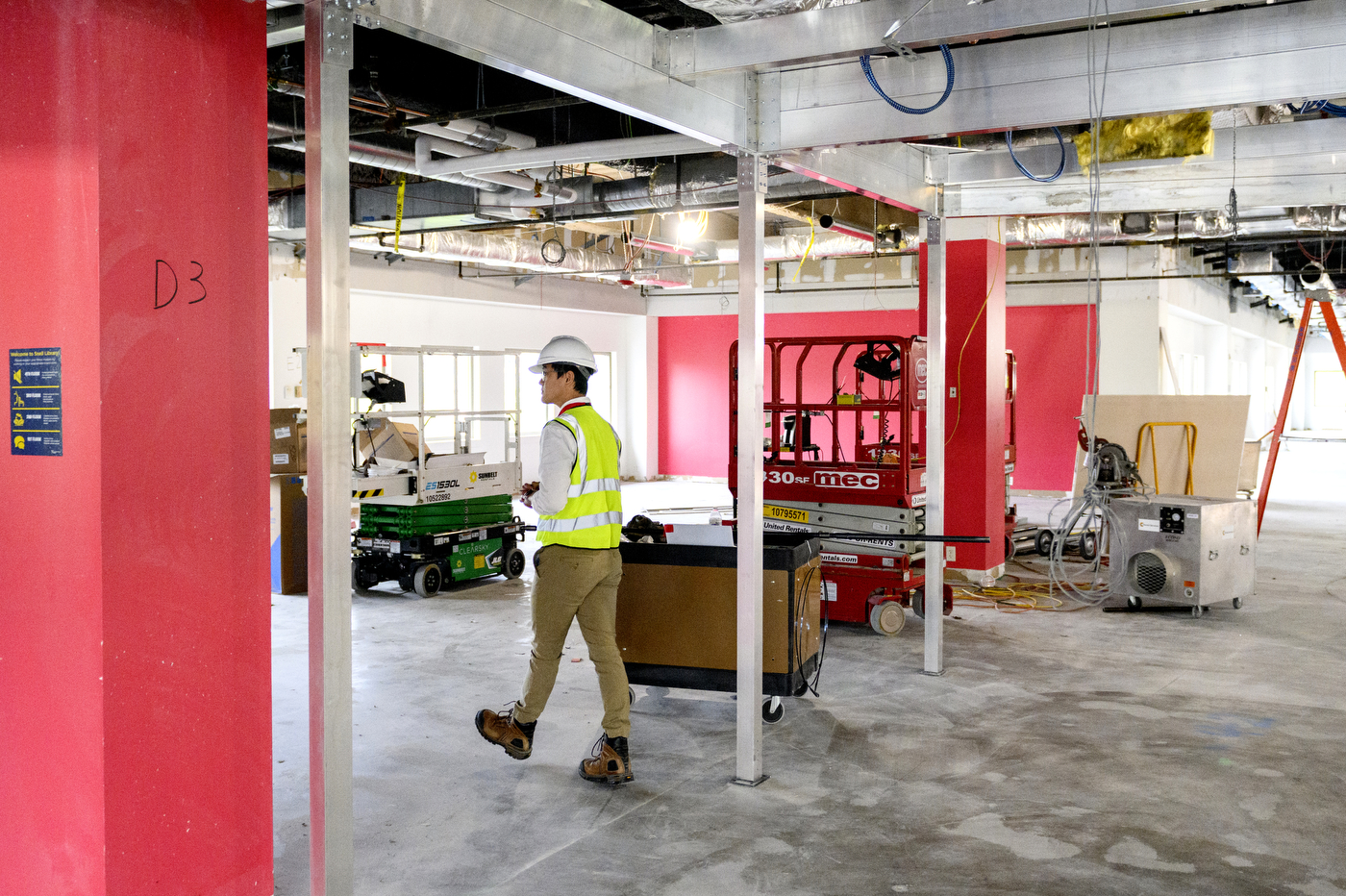
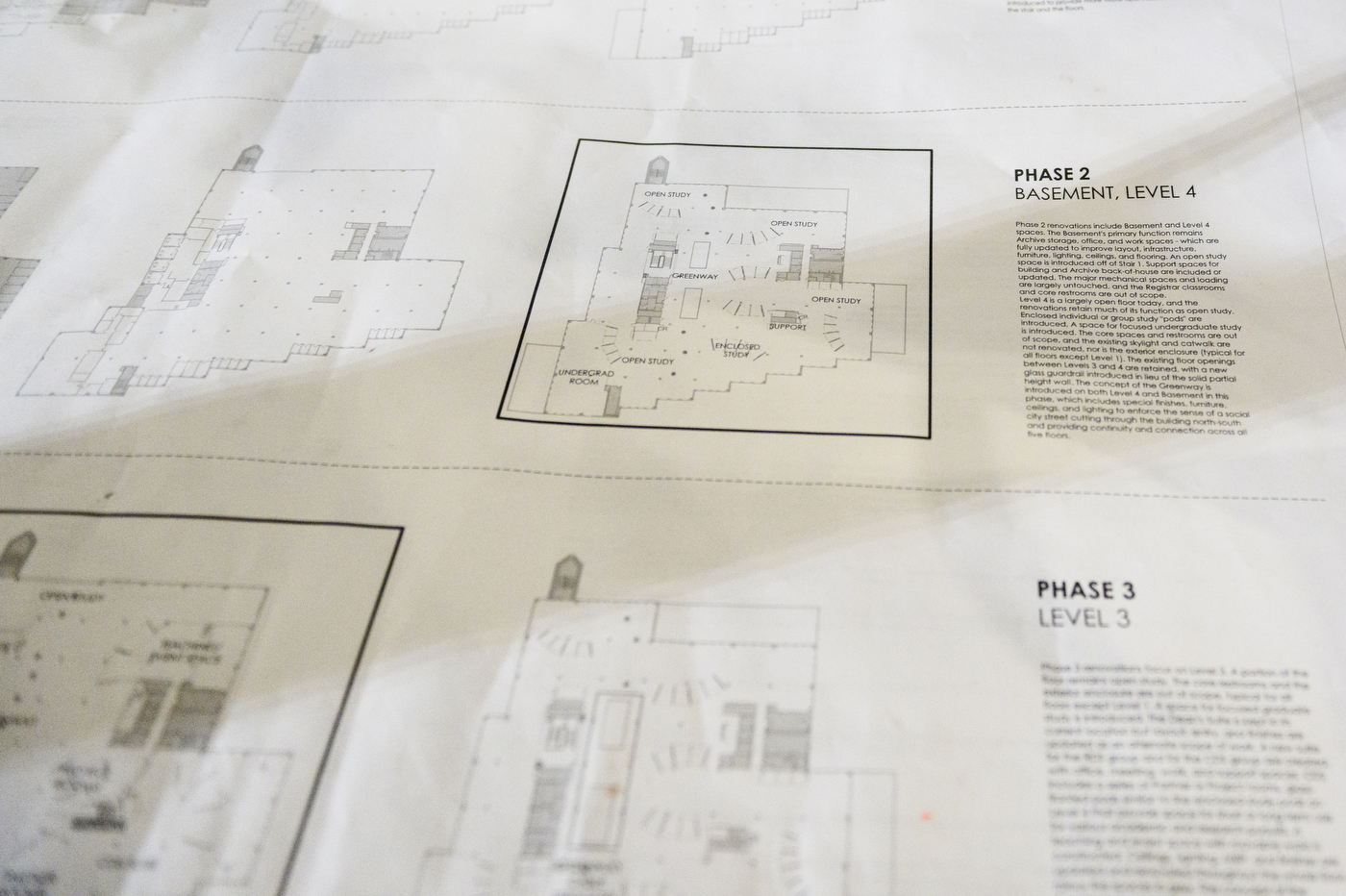
The multi-year renovation, which was planned in consultation with students, faculty and staff, will enable the library to evolve to a digital-age resource center and hub for research, scholarship, collaboration, activity and—of course—quiet studying.
“We will end up with, really, a library-based think tank that involves multiple colleges, schools and groups,” Cohen says.
Work this summer is focused primarily on the fourth, or top, floor of Snell and the basement level. Both are expected to be completed in the fall semester. Work is also beginning to wrap the first floor main entrance and west side of the building in glass.
So, what can you expect?
The fourth floor used to be mainly books with study rooms along the south wall. It now includes those glass cubes on the interior of the floor, enabling the walls that made up the former study rooms to be removed so that light from the windows can penetrate the interior.
Heading downward, the first floor main entrance will be bumped out and “enclosed in glass,” as Cohen said, to create a new flexible space with a cafe that will be open to the public and can be used for events. Most importantly on that floor, the renovations will connect both entrances to the building.
As for aesthetics, think of walls coming down to unify space, lots of glass, light-filled rooms with long views, as well as a few nooks and crannies where students can retreat to hide with their laptop or a book.
Cohen said that transparency is a big theme of the renovation.
“We want people to see opportunities and research going on,” Cohen said, explaining that seeing scholars and researchers at work can lead to a “serendipitous experience” where a student may be inspired to pursue something new and unique.
“I think we can all learn from each other,” Cohen said.
Cyrus Moulton is a Northeastern Global News reporter. Email him at c.moulton@northeastern.edu. Follow him on Twitter@MoultonCyrus.






